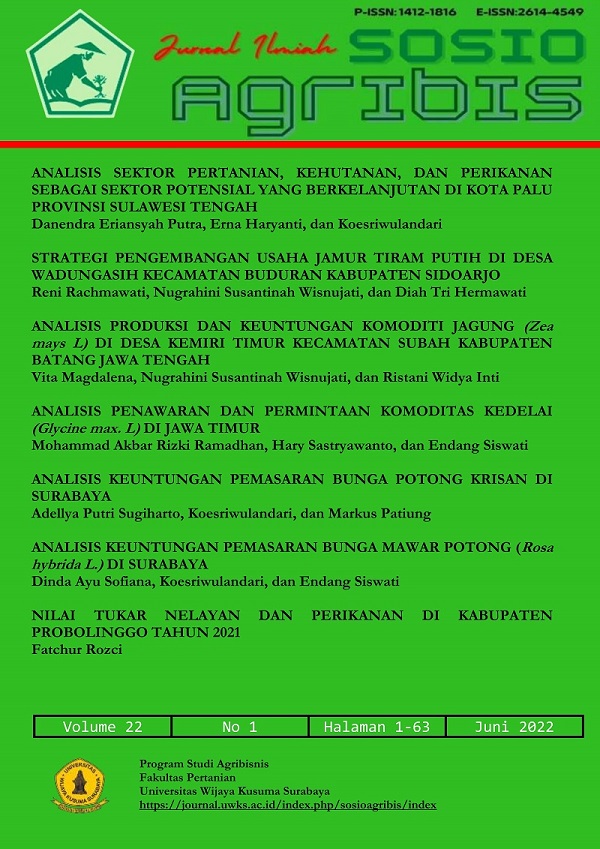Analisis Sektor Pertanian, Kehutanan, dan Perikanan sebagai Sektor Potensial yang Berkelanjutan di Kota Palu Provinsi Sulawesi Tengah
DOI:
https://doi.org/10.30742/jisa22120221998Abstract
The objectives of this study are to analyze the potential of the agriculture, forestry, and fisheries sectors as base/potential sectors, analyze whether the agriculture, forestry, and fisheries sectors are sustainable sectors or not. Knowing the pattern and structure of the agricultural, forestry, and fishery sectors in an area. The data source used in writing this thesis was sourced from the Central Statistics Agency (BPS) of Palu City and Central Sulawesi Province from 2012 to 2019. The methods used in writing the thesis are Location Quotient analysis, Dynamic Location Quotient and Klassen Typology. The results of the study are based on the results of the LQ analysis of the Agriculture, Forestry and Fisheries sector in Palu City from 2012-2019 is a base / potential sector with an LQ value of 0.14. The results of the LQ and DLQ analysis show that the LQ value is 0.14 while the DLQ with a value of 5.34 shows that the Agriculture, Forestry and Fisheries sector in Palu City from 2012-2019 is the Mainstay sector, meaning that the agriculture, forestry and fisheries sectors are currently non-base but in the future the sector will become a base sector. This shows that the agriculture, forestry and fisheries sectors in Palu City are sustainable sectors. The results of the typology analysis of klassen, namely, rik > ri and yik < yi, the pattern and structure of the agricultural, forestry, and fisheries sectors in Palu City can be declared to be a fast-developing sector.
Keywords: GRDP, Agribusiness Sector, LQ, DLQ, Klassen Typology.Downloads
Published
Issue
Section
License
- The author retains copyright and grants the journal the right of first publication with the work being simultaneously licensed under the Creative Commons Attribution License which allows others to share the work with acknowledgment of the work's authorship and initial publication in this journal.
- Authors may make additional separate contractual arrangements for the non-exclusive distribution of the published journal version of the work (for example, posting it to an institutional repository or publishing it in a book), with acknowledgment of its initial publication in this journal.
- Authors are permitted and encouraged to post their work online (for example, in institutional repositories or on their websites) before and during the submission process, as it can result in a productive exchange, as well as earlier and larger citations of published work (See The Influence Open Access).

